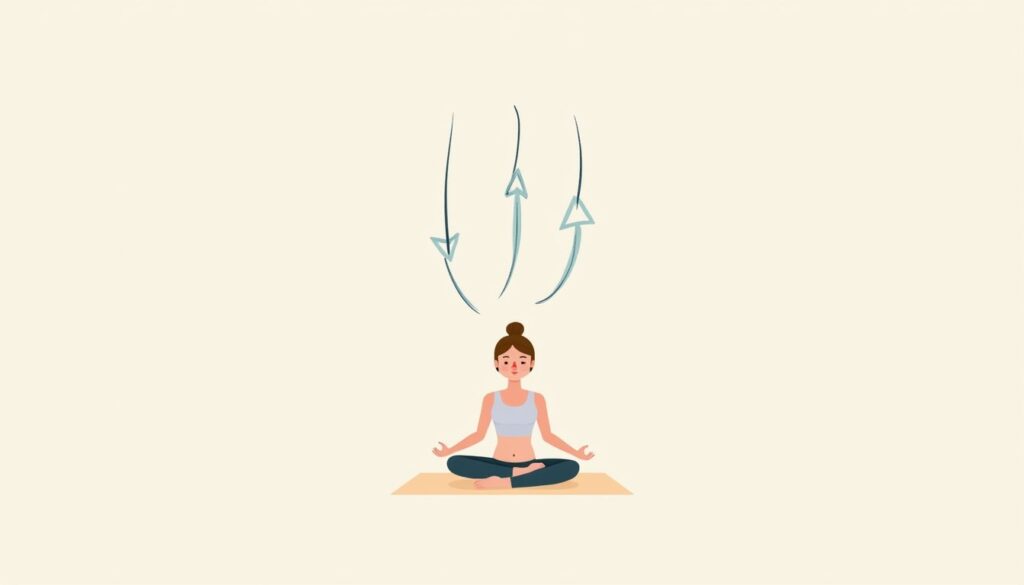Breath as the Anchor of Inner Peace
If you pause right now and take a slow, intentional breath, you’ll notice something almost magical. Your body softens, your heart rate steadies, and your mind feels just a little lighter. Breathing isn’t just a survival function—it’s an anchor, a natural rhythm that’s always with you, waiting to guide you back into the present moment.
In meditation, the breath is more than a background process. It becomes the gateway to awareness and relaxation. Unlike other bodily functions such as digestion or heartbeat, breathing is unique because it happens both automatically and voluntarily. You can let it flow naturally or gently shape it to influence how you feel. This dual nature makes breathing a central tool in meditation practices across the world.
Whether you’re brand-new to meditation or someone who has been practicing for years, exploring the role of breath can transform the way you approach mindfulness. Breathing can calm racing thoughts, ease tension, and open a path to deeper states of peace.
In this article, we’ll uncover the science of breath, its importance in meditation, practical techniques you can try, and the benefits you’ll gain by making it part of daily life. By the end, you’ll see why the breath isn’t just something you do—it’s a bridge to a calmer, more centered you.
The Science of Breathing and Its Impact on the Mind

At first glance, breathing seems simple. Air flows in, air flows out. But behind the simplicity lies a powerful biological system that directly influences your mental state.
When you breathe shallowly and quickly—often without realizing it—you activate the sympathetic nervous system, the same system responsible for the fight-or-flight response. This is helpful in moments of danger but exhausting when triggered constantly by modern stress. On the other hand, when you slow down and deepen your breath, you activate the parasympathetic nervous system, also called the “rest and digest” system. This signals your body to relax, repair, and restore balance.
Scientists have confirmed what ancient practitioners always believed: your breath is a remote control for your mind. Controlled breathing has been shown to:
- Lower stress hormones like cortisol
- Improve focus and concentration
- Reduce blood pressure and heart rate
- Increase heart rate variability, a sign of resilience
- Improve sleep quality and emotional regulation
A fascinating aspect of breath science is how oxygen and carbon dioxide balance affects clarity. Too much shallow breathing means you exhale too much carbon dioxide, leading to dizziness, fogginess, and even anxiety. Conscious breathing helps restore balance, leaving you calmer and sharper.
Studies from Harvard, Stanford, and other research centers now support practices like mindfulness meditation, pranayama, and structured breathwork. What was once thought of as “spiritual” is now backed by neuroscience. Breathing isn’t just mystical—it’s measurable, and it works.
Breathing as the Core of Meditation Practice
Every meditation tradition—whether it’s Buddhist mindfulness, yogic pranayama, Zen sitting, or even modern secular mindfulness—uses breath as its foundation. Why? Because breath is always present, always moving, and always accessible. You don’t need any special tools or settings. Wherever you are, your breath is with you.
The connection between breath and mind is intimate. Think about how your breathing shifts with your emotions. Nervous? Your breath becomes fast and shallow. Calm? It slows down. By learning to guide your breath, you begin to guide your inner world.
For beginners, focusing on the breath helps reduce distraction. Every inhale and exhale is like a reset button, gently pulling you back when your mind wanders. For experienced meditators, breath awareness can open doors to deeper states of stillness and clarity.
However, many beginners make one mistake: they try too hard. They force the breath, thinking meditation is about controlling it. In reality, meditation with the breath is about noticing before changing. You start by observing the natural rhythm, then gently apply techniques when needed. This balance between observation and gentle guidance is where the magic happens.
Effective Breathing Techniques for Deep Relaxation

There are many ways to use breathing as a tool for meditation and relaxation. Let’s explore some of the most powerful techniques, each with its own unique benefits.
1. Diaphragmatic Breathing (Belly Breathing)
This method encourages you to breathe deeply into your diaphragm instead of shallow chest breathing. Place one hand on your chest and one on your belly. As you inhale, your belly should rise while your chest remains mostly still. This type of breathing triggers relaxation and helps oxygen flow more efficiently.
2. Box Breathing
A structured technique often used by athletes and military professionals, box breathing involves equal parts inhale, hold, exhale, hold. For example: inhale for four counts, hold for four, exhale for four, hold for four. This creates balance and resets your nervous system.
3. Alternate Nostril Breathing (Nadi Shodhana)
Originating in yoga, this practice balances both sides of the brain. You close one nostril, inhale through the other, switch, and exhale. It’s excellent for balancing energy, calming the mind, and improving focus.
4. The 4-7-8 Technique
This method involves inhaling for 4 seconds, holding for 7, and exhaling slowly for 8. It’s especially effective for falling asleep and easing anxiety.
5. Mindful Breathing
Perhaps the simplest yet most profound technique—just noticing your natural breath without trying to change it. Each inhale and exhale becomes a moment of mindfulness, an anchor that gently pulls you into the present.
Each of these techniques can be practiced for just a few minutes, yet they create powerful shifts. The key isn’t complexity, but consistency.
Integrating Breathing into Daily Meditation and Life
Breathing techniques are most effective when they become part of your daily rhythm, not just something you practice once in a while. Start with a simple routine:
- Morning ritual: Begin your day with 5–10 minutes of diaphragmatic or mindful breathing. This sets a calm tone for the hours ahead.
- Midday reset: Use box breathing or alternate nostril breathing during a break at work to refresh focus and reduce stress.
- Evening wind-down: Try the 4-7-8 method before bed to prepare your body for rest.
Beyond meditation sessions, breathing can become a tool in everyday challenges. Stuck in traffic? Breathe. Feeling anxious before a presentation? Slow your breath. Each time, you’re rewiring your nervous system to respond with calm instead of panic.
The more often you practice, the more natural it becomes. Breath awareness turns into a way of living, where even small moments become opportunities to return to peace.
Benefits of Breathing Practices for Mental and Physical Health

The rewards of integrating breath into meditation go beyond just feeling relaxed. Over time, the benefits ripple across mental, emotional, and physical health:
- Reduced Stress & Anxiety: Slow, controlled breathing lowers stress hormones and brings emotional balance.
- Sharper Focus & Awareness: By anchoring to the breath, distractions lose their power.
- Improved Sleep: Breathing exercises calm the nervous system and prepare the body for restful sleep.
- Emotional Regulation: The breath creates a pause between stimulus and response, helping you react thoughtfully instead of impulsively.
- Physical Health Benefits: From lowering blood pressure to improving digestion, breathing positively influences nearly every system in the body.
In short, breath is medicine—natural, free, and available to you at every moment.
FAQs About Breathing in Meditation
1. Is it normal to feel lightheaded while practicing?
Yes, especially if you’re new. It usually means you’re over-breathing. Slow down, take gentler breaths, and the feeling will pass.
2. Should I breathe through my nose or mouth?
Nasal breathing is best for meditation, as it filters air, slows breathing, and engages the diaphragm. Mouth breathing should be avoided except in specific techniques.
3. How long should I practice breathing meditation daily?
Even 5–10 minutes daily can make a big difference. Consistency matters more than duration.
4. Can breathing techniques help with anxiety attacks?
Yes. Techniques like box breathing or 4-7-8 can calm the nervous system during heightened anxiety.
5. What if my mind keeps wandering?
That’s normal. Each time you notice, simply return to the breath. The act of returning is itself the practice.
6. Do I need a teacher to learn advanced breathwork?
While many techniques can be learned alone, deeper breathwork (like holotropic breathing) is best practiced with guidance.
Conclusion: Returning to the Breath for Lasting Calm
Your breath is more than just air—it’s a lifeline to presence, clarity, and peace. In meditation, it becomes a trusted anchor, drawing you out of racing thoughts and back into balance. Whether you practice simple mindful breathing or structured techniques, the benefits are profound.
The beauty of breathwork is its simplicity: you carry the tool with you everywhere you go. Each inhale and exhale is a reminder that calm is always within reach.
So the next time life feels overwhelming, pause. Take a deep, intentional breath. In that moment, you’re not just surviving—you’re reconnecting with the calm, steady rhythm that has been with you all along.

